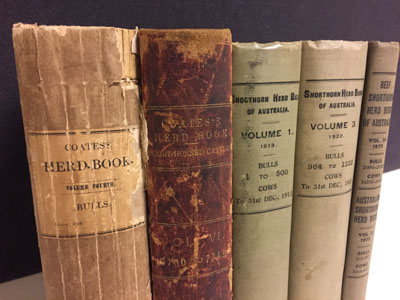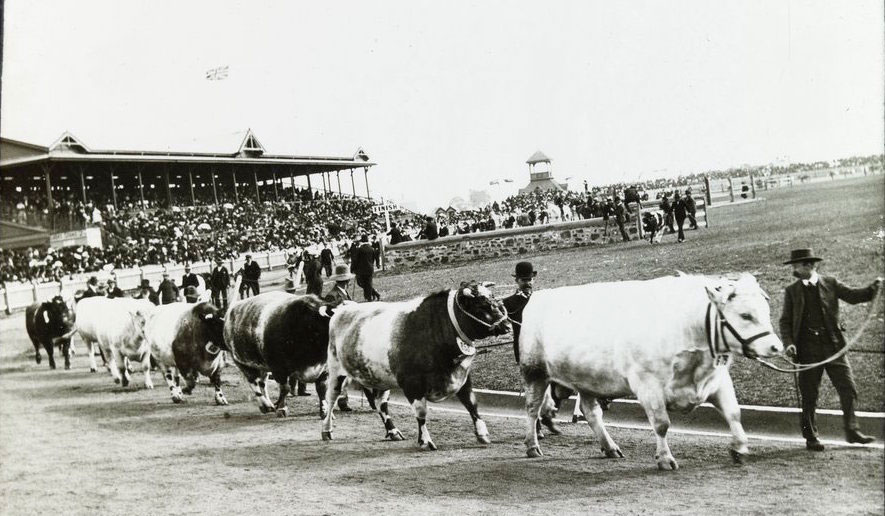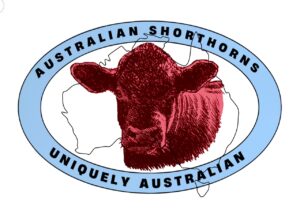The history and development of shorthorn cattle stretches back to 16th Century England, while their introduction to Australia in the early 1800s heralded a significant breeding trend..
Shorthorns have a legacy tracing back over three centuries. The breed has played a dominant role in the development of the Australian beef industry since the early days of settlement.


Shorthorn cattle – a brief chronology
- 16th century – Origins of all shorthorn cattle in north-east England. ‘Durhams’ and ‘Teeswaters’.
- Late 18th century – Colling brothers improve the Durham breed, with particular focus on the bull Hubback and four cows.
- Almost contemporaneously – Booth and Bates improve the Teeswaters. Booth focuses on beef characteristics, and Bates on dairy qualities.
- 1804 – Comet born. A product of the Colling brothers program.
- 1810 – Comet sold for 1000 guineas at the Ketton sale. The first recorded sale of a bull for a thousand guineas or more.
- 1822- Volume 1 of Coates’s Herd Book ‘of short-horned cattle’ produced by George Coates. It is the first herd book of pedigreed cattle in the world. Comet (now long dead) is registered number 155. The entry reads:
Comet red and white calved in 1804 bred by Mr C Colling got by Favourite 252 d Young Phoenix by Favourite 252 gd Phoenix by Foljambe 263 gr gd Favourite by Mr R Alcock’s bull 19 gr gr gd by Mr Jacob Smith’s bull 608 gr gr gr gd by Mr Jolly’s bull. Died in 1815.
- 1874 – Shorthorn Society of Great Britain and Ireland founded. Society takes over publishing Coates’s Herd Book.
- 1874 to 1958 – Shorthorn Society registers cattle of beef and dairy types.
- 1958 – Beef breeders begin own section of herd book.
- 1976 to 1991 – Maine Anjou cattle admitted to herd book.
- 2010 – English supermarket chain Morrisons begins promotion of Shorthorn branded beef. Promotion expanded in 2016.
- 1803 – Reference to importation of Durham cattle.
- 1825 – First authenticated importation of Shorthorns to Australia, by Potter McQueen of Segenhoe, NSW. Cattle included the bull Young Comet, a grandson of Comet.
- About 1827 – First importation of a bull registered in Coates’s Herd Book, by Thomas Iceley of Coombing Park, Carcoar, NSW.
- About 1848 –Victorian Shorthorn Herd Book established by the Port Phillip Farmers Club.
- 1850s – Shorthorns reckoned to be half of the Australian cattle herd.
- 1870 – NSW Shorthorn Herd Book established by the Agricultural Society of NSW.
- 1874 – DS McLarty, then manager of Bundore Station, breeds ‘an outstanding roan cow without horns’. This is reckoned to be the beginning of poll shorthorn breeding in Australia. Long afterwards, McLarty’s ‘Lone Pine’ stud becomes a foundation breeder in the Poll Shorthorn Herd Book of Australasia.
- 1875 – Chief Inspector of Stock in NSW states that 90% of all the cattle in NSW were shorthorns.
- 1876/1878
“Costello rode on alone a further 250 miles to Rockhampton where he found that a lovely coastal property named Cawarral was for sale. He purchased it on sight, with its 4,000 splendid shorthorn cattle, hundreds of wellbred horses of racing stock and rambling old homestead built up, Queensland fashion, on high blocks and topped with a shingled roof. There were outhouses, training stables, paddocks …”- An excerpt from ‘Kings in Grass Castles’ by Mary Durack
- Late 1870s – The Duracks drove cattle from the eastern Colonies across the Top End, and stock the Ord River country with shorthorns.
- 1882 – In a long-remembered feat, James Warby droves 1800 shorthorns north to Cloncurry, picks up another 2000 shorthorns, droves the mob to Burketown, then across the Headingly Track to the McArthur, the Limmen and the Roper, and finally to Margaret River.
- 1880s – CB Fisher stocks Victoria Downs with up to 30,000 shorthorns at any one time.
- 1914 – Shorthorn Herd Book of Queensland published.
- 1918 – Volume 1 of the Shorthorn Herd Book of Australia published by the Royal Agricultural Society of Victoria after consultation with shorthorn breeders. The Herd Book is recognised by the Royal Agricultural Society of New South Wales. The standard adopted is that set by Coates’s Herd Book. As in England, the publication of this Herd Book, and its Colony-based predecessors precede the establishment of the breed Society. Volume 1 reconstructs the history of shorthorn breeding in Australia, and refers to animals then alive and animals long dead. The earliest date of birth is of a bull born in 1849. Comet appears as the sire of grand dams back to the fourteenth generation. The volume contains registrations of beef and dairy types.
- March 1920 – The Shorthorn Society of Australia (since 1960, the Beef Shorthorn Society of Australia) founded, with branch committees in Victoria and New South Wales. Laurence Dugdale is the first Federal President, succeeded two years later by Anthony Hordern.
- 1921 – Volume 3 of the Shorthorn Herd Book of Australia published, now by the Shorthorn Society. All volumes of the Herd Book since that time published by the Society.
- 1921- The Dairy Shorthorn Association of Australia established, with its own herd book.
- 1904/1931
“Perhaps no breed in the world has left its mark upon breeding and commercial stock as the Shorthorns. They are admirable for all classes of country because of their wonderful adaptability to soil and climatic conditions. Their prepotency over other breeds renders them ideal for cross-breeding purposes. The beef type is the one seen on most of the Diamantina runs. Here, on the sweet spinifex country, they show early maturity. When sixteen to twenty months of age, they can be sent as baby beef to the Adelaide market; the country butchers give high prices for such nuggety sweet beef.”- An excerpt from ‘Our Sandhill Country’ by A. M Duncan
- 1935 – Poll Shorthorn Society of Australasia established with its own herd book.
- 1937 – Volume 1 of the Poll Shorthorn Society of Australasia Herd Book published.
- 1960 – The Shorthorn Society of Australia changes its name to the Beef Shorthorn Society of Australia, mirroring a recent change in England.
- 1974 – Volume 1 of the Australian Shorthorn Herd Book published by the Beef Shorthorn Society.
- 1981 – The Poll Shorthorn Society of Australia (previously the Poll Shorthorn Society of Australasia) changes its name to the Shorthorn Society of Australia, thus taking up the original name of what is now the Beef Shorthorn Society. It trades as ‘Shorthorn Beef’.
- 2016 – Inception of the JBS Thousand Guineas program, revisiting Comet, a foundation Beef Shorthorn.
- 2024 – Fifty years after publishing Volume 1 of the Australian Shorthorn Herd book, the Beef Shorthorn Society of Australia begins trading as Australian Shorthorns.
